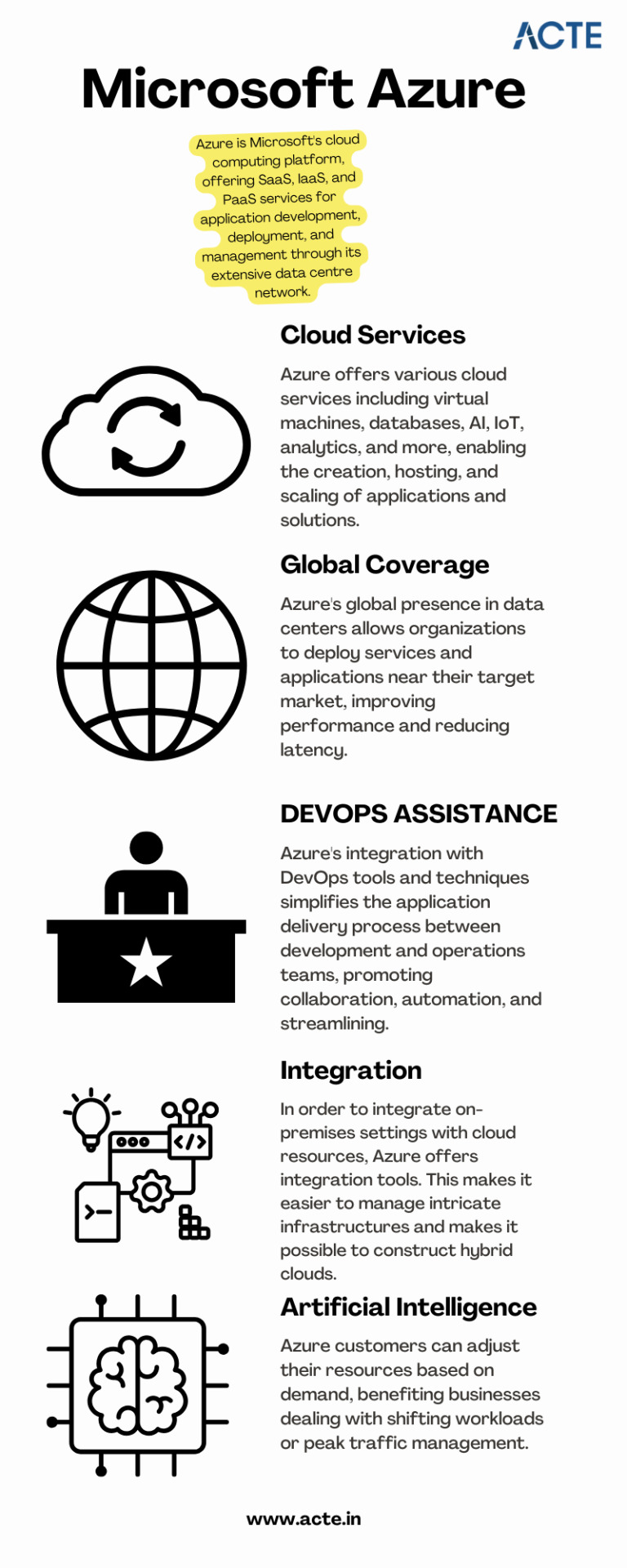#IoT- Identity Access Management
Text
Securing the Internet of Things: The Role of Identity Access Management in Protecting IoT Devices
The Internet of Things (IoT) has revolutionized numerous sectors, including consumer businesses, industrial applications, energy and utility systems, building and facilities management, mobility, and infrastructure. This widespread adoption has transformed how people, processes, and technologies converge to drive improvements. However, as IoT technology becomes more ubiquitous, so do the security…
#business#Business Intelligence#cybersecurity#data privacy#IAM#iam for iot#Identity Access Management#iot device management#IoT devices#iot identity management#IoT Security#market#Market Intelligence
0 notes
Text
Iot Identity and Access Management (IAM) Market Trends, Top Vendors and Growth Prospects
According to a new report published by Allied Market Research, titled, “Iot Identity And Access Management (Iam) Market,” The iot identity and access management market size was valued at $4.9 billion in 2021, and is estimated to reach $47.2 billion by 2031, growing at a CAGR of 25.4% from 2022 to 2031.
Identity and access management (IAM) is the discipline that enables right individuals to access right resources at the right times for the right reasons. IoT devices are focused on connecting things, people, tools, and applications, and IoT identity access management provides end-to-end encryption, overload detection, and unauthorized access removal to help build strong security features.

Rapid digitization toward business operations and an increase in integration of IAM with IoT devices aided in propelling the growth of global IoT IAM market. Moreover, cultural shift from traditional IAM to IoT IAM and increasing spending on cyber security during the period has positively impacted IoT IAM industry. However, high cost associated with implementation and maintenance of IoT identity and access management (IAM) solution and increase in security & privacy concerns is anticipated to hamper the IoT IAM market during the forecast period. On the contrary, adoption of Bring your Own Identity (BYOI) approach is expected to offer remunerative opportunities for the expansion of the Iot Identity And Access Management market forecast.
On the basis of security type, the network security segment dominated the overall Iot Identity And Access Management Market Share in 2021 and is expected to continue this trend during the forecast period. This is attributed to the increase in cyber-attacks on networks due to increase in internet penetration and connected devices. However, the cloud security segment is expected to witness the highest growth owing to increase in adoption of cloud-based security solutions, rising demand for cloud-based services.
Region wise, the Iot Identity And Access Management Market analysis was dominated by North America in 2021, and is expected to retain its position during the forecast period, owing to its higher expenditure on technological solutions for better security. However, Asia-Pacific is expected to witness significant growth during the forecast period, owing to the growth in number of startups and the expanding infrastructure in the region, which is expected to fuel the growth of the IoT IAM industry in the region during the forecast period.
Inquiry Before Buying: https://www.alliedmarketresearch.com/purchase-enquiry/31995
The IoT Identity And Access Management Market is expected to grow rapidly after the pandemic, owing to rise in adoption of work-from-home culture across the globe. Furthermore, increase in cyber risk and new vulnerabilities is leading organizations worldwide to rethink their security setups. To manage employees working from home, companies rely extensively on remote-based monitoring of the workforce, enhancing the demand for IoT solutions. This helps bring transparency, provide real-time tracking, improve safety, and ensure meeting government compliance. However, the cybersecurity of remote workforce and enterprises plays a vital role in catering to their clients during lockdowns. Therefore, it offers opportunities for the IoT identity and access management market post pandemic.
KEY FINDINGS OF THE STUDY
By offering, the solution segment accounted for the largest IoT IAM market share in 2021.
By region, North America generated the highest revenue in 2021.
By enterprise size, large enterprises segment accounted for the largest IoT IAM market share in 2021.
By deployment mode, the on-premise segment generated the highest revenue in 2021.
The key players profiled in the Iot Identity And Access Management Industry are Telefonaktiebolaget LM Ericsson, AWS, Google LLC, Microsoft, IBM, Cisco Systems, Inc., Oracle, HID Global Corporation, DigiCert, Inc., Keyfactor, Entrust Corporation, GlobalSign, One Identity, LLC, KaaIoT Technologies, LLC, Sailpoint Technologies Holdings, Inc., Optiv Security, Inc., and IdentityFusion, Inc. These players have adopted various strategies to increase their market penetration and strengthen their position in the Iot Identity And Access Management Industry.
About Us:
Allied Market Research (AMR) is a full-service market research and business-consulting wing of Allied Analytics LLP based in Portland, Oregon. Allied Market Research provides global enterprises as well as medium and small businesses with unmatched quality of “Market Research Reports Insights” and “Business Intelligence Solutions.” AMR has a targeted view to provide business insights and consulting to assist its clients to make strategic business decisions and achieve sustainable growth in their respective market domain.
#Iot Identity and Access Management (IAM) Market#Iot Identity and Access Management (IAM) Industry#Iot Identity and Access Management (IAM)#IAM
0 notes
Link
#market research future#iot-identity access management#identity verification market#iam market#iot- iam market
0 notes
Text
Best 10 Business Strategies for year 2024
In 2024 and beyond, businesses will have to change with the times and adjust their approach based on new and existing market realities. The following are the best 10 business approach that will help companies to prosper in coming year
1. Embrace Sustainability
The days when sustainability was discretionary are long gone. Businesses need to incorporate environmental, social and governance (ESG) values into their business practices. In the same vein, brands can improve brand identity and appeal to environmental advocates by using renewable forms of energy or minimizing their carbon footprints.
Example: a fashion brand can rethink the materials to use organic cotton and recycled for their clothing lines. They can also run a take-back scheme, allowing customers to return old clothes for recycling (not only reducing waste but creating and supporting the circular economy).
2. Leverage AI

AI is revolutionizing business operations. Using AI-fuelled solutions means that you can automate processes, bring in positive customer experiences, and get insights. AI chatbots: AI can be utilized in the form of a conversational entity to support and perform backend operations, as well.
With a bit more specificity, say for example that an AI-powered recommendation engine recommends products to customers based on their browsing history and purchase patterns (as the use case of retail). This helps to increase the sales and improve the shopping experience.
3. Prioritize Cybersecurity
Cybersecurity is of utmost important as more and more business transitions towards digital platforms. Businesses need to part with a more substantial amount of money on advanced protective measures so that they can keep sensitive data private and continue earning consumer trust. Regular security audits and training of employees can reduce these risks.
Example: A financial services firm may implement multi-factor authentication (MFA) for all online transactions, regularly control access to Internet-facing administrative interfaces and service ports as well as the encryption protocols to secure client data from cyberattacks.
4. Optimizing Remote and Hybrid Working Models

Remote / hybrid is the new normal Remote teams force companies to implement effective motivation and management strategies. Collaboration tools and a balanced virtual culture can improve productivity and employee satisfaction.
- Illustration: a Tech company using Asana / Trello etc. for pm to keep remote teams from falling out of balance. They can also organise weekly team-building activities to keep a strong team spirit.
5. Focus on Customer Experience
Retention and growth of the sales follow-through can be tied to high quality customer experiences. Harness data analytics to deepen customer insights and personalize product offers making your marketing campaigns personal: a customer support that is responsive enough can drive a great level of returning customers.
Example – For any e-commerce business, you can take user experience feedback tools to know about how your customers are getting along and make necessary changes. Custom email campaigns and loyalty programs can also be positively associated with customer satisfaction and retention.
6. Digitalization Investment

It is only the beginning of digital transformation which we all know, is key to global competitiveness. For streamlining, companies have to adopt the use advanced technologies such as Blockchain Technology and Internet of Things (IoT) in conjunction with cloud computing.
IoT example : real-time tracking and analytics to optimize supply chain management
7. Enhance Employee Skills
Develop Your Employees: Investing in employee development is key to succeeding as a business. The training is provided for the folks of various industries and so employees can increase their skills that are needed to work in a certain company. Employee performance can be enhanced by providing training programs in future technology skills and soft skills and job satisfaction.
Example: A marketing agency can host webinars or create courses to teach people the latest digital marketing trends and tools This can help to keep employees in the know which results in boosting their skills, making your campaigns successful.
8. Diversify Supply Chains

The ongoing pandemic has exposed the weaknesses of global supply chains. …diversify its supply base and promote the manufacturing of drugs in Nigeria to eliminate total dependence on a single source. In return, this approach increases resilience and reduces exposure to the risks of supply chain interruption.
- E.g., a consumer electronics company can source components from many suppliers in various regions. In so doing, this alleviates avoidable supply chain interruptions during times of political tensions or when disasters hit.
9. Make Decisions Based on Data
A business database is an asset for businesses. By implementing data, they allow you to make decisions based on the data that your analytics tools are providing. For example, sales analysis lets you track trends and better tailor your goods to the market.
Example: A retail chain can use data analytics to find out when a customer buys, and it change their purchasing policies. This can also reduce overstock and stockouts while overall, increasing efficiency.
10. Foster Innovation

Business Growth Innovation is Key A culture of creativity and experimentation should be established in companies. Funding R&D and teaming with startups can open many doors to both solve problems creatively but also tap into new markets.
Example: A software development firm could create an innovation lab where team members are freed to work on speculative projects. Moreover, work with start-ups on new technologies and solutions.
By adopting these strategies, businesses can navigate the turbulence for 2024 and roll up market — progressive.AI with an evolving dynamic market, being ahead of trends and updated is most likely will help you thrive in the business landscape.
#ai#business#business strategy#business growth#startup#fintech#technology#tech#innovation#ai in business
2 notes
·
View notes
Text
From Novice to Pro: Master the Cloud with AWS Training!
In today's rapidly evolving technology landscape, cloud computing has emerged as a game-changer, providing businesses with unparalleled flexibility, scalability, and cost-efficiency. Among the various cloud platforms available, Amazon Web Services (AWS) stands out as a leader, offering a comprehensive suite of services and solutions. Whether you are a fresh graduate eager to kickstart your career or a seasoned professional looking to upskill, AWS training can be the gateway to success in the cloud. This article explores the key components of AWS training, the reasons why it is a compelling choice, the promising placement opportunities it brings, and the numerous benefits it offers.

Key Components of AWS Training
1. Foundational Knowledge: Building a Strong Base
AWS training starts by laying a solid foundation of cloud computing concepts and AWS-specific terminology. It covers essential topics such as virtualization, storage types, networking, and security fundamentals. This groundwork ensures that even individuals with little to no prior knowledge of cloud computing can grasp the intricacies of AWS technology easily.
2. Core Services: Exploring the AWS Portfolio
Once the fundamentals are in place, AWS training delves into the vast array of core services offered by the platform. Participants learn about compute services like Amazon Elastic Compute Cloud (EC2), storage options such as Amazon Simple Storage Service (S3), and database solutions like Amazon Relational Database Service (RDS). Additionally, they gain insights into services that enhance performance, scalability, and security, such as Amazon Virtual Private Cloud (VPC), AWS Identity and Access Management (IAM), and AWS CloudTrail.
3. Specialized Domains: Nurturing Expertise
As participants progress through the training, they have the opportunity to explore advanced and specialized areas within AWS. These can include topics like machine learning, big data analytics, Internet of Things (IoT), serverless computing, and DevOps practices. By delving into these niches, individuals can gain expertise in specific domains and position themselves as sought-after professionals in the industry.

Reasons to Choose AWS Training
1. Industry Dominance: Aligning with the Market Leader
One of the significant reasons to choose AWS training is the platform's unrivaled market dominance. With a staggering market share, AWS is trusted and adopted by businesses across industries worldwide. By acquiring AWS skills, individuals become part of the ecosystem that powers the digital transformation of numerous organizations, enhancing their career prospects significantly.
2. Comprehensive Learning Resources: Abundance of Educational Tools
AWS training offers a wealth of comprehensive learning resources, ranging from extensive documentation, tutorials, and whitepapers to hands-on labs and interactive courses. These resources cater to different learning preferences, enabling individuals to choose their preferred mode of learning and acquire a deep understanding of AWS services and concepts.
3. Recognized Certifications: Validating Expertise
AWS certifications are globally recognized credentials that validate an individual's competence in using AWS services and solutions effectively. By completing AWS training and obtaining certifications like AWS Certified Solutions Architect or AWS Certified Developer, individuals can boost their professional credibility, open doors to new job opportunities, and command higher salaries in the job market.
Placement Opportunities
Upon completing AWS training, individuals can explore a multitude of placement opportunities. The demand for professionals skilled in AWS is soaring, as organizations increasingly migrate their infrastructure to the cloud or adopt hybrid cloud strategies. From startups to multinational corporations, industries spanning finance, healthcare, retail, and more seek talented individuals who can architect, develop, and manage cloud-based solutions using AWS. This robust demand translates into a plethora of rewarding career options and a higher likelihood of finding positions that align with one's interests and aspirations.

In conclusion, mastering the cloud with AWS training at ACTE institute provides individuals with a solid foundation, comprehensive knowledge, and specialized expertise in one of the most dominant cloud platforms available. The reasons to choose AWS training are compelling, ranging from the industry's unparalleled market position to the top ranking state.
9 notes
·
View notes
Text
Unlocking the Future: AI's Hidden Potential in Real Estate

In an era characterized by rapid technological advancements, industries across the board are witnessing transformative changes, and the real estate sector is no exception. As AI continues to permeate various aspects of our lives, its potential to empower the real estate industry remains largely untapped. In this blog post, we'll explore the unique ways in which AI can revolutionize the real estate landscape, unlocking new opportunities and reshaping traditional practices.
Democratizing Access to Real Estate Investment: Traditionally, investing in real estate has been perceived as exclusive to those with substantial capital and industry expertise. However, AI-powered platforms are democratizing access to real estate investment by offering fractional ownership and crowdfunding opportunities. Through algorithms that analyze market trends and assess investment risks, these platforms enable individuals to diversify their portfolios and participate in lucrative real estate ventures with lower barriers to entry.
Sustainable Development and Green Building Initiatives: As sustainability becomes a key priority in urban development, AI can play a pivotal role in advancing green building initiatives. Machine learning algorithms can optimize building designs for energy efficiency, leverage IoT sensors to monitor resource consumption, and forecast environmental impacts. By integrating AI-driven sustainability solutions into real estate projects, developers can minimize carbon footprints, reduce operational costs, and create healthier living environments for occupants.
Enhancing Urban Planning and Smart Cities: AI's ability to process vast amounts of data can revolutionize urban planning and contribute to the realization of smart cities. By analyzing demographic trends, traffic patterns, and infrastructure requirements, AI algorithms can optimize land use, improve transportation networks, and enhance urban resilience. Through predictive modeling and scenario analysis, city planners can make data-driven decisions that foster sustainable growth, mitigate congestion, and enhance quality of life for residents.
Empowering Real Estate Agents with Intelligent Assistants: Real estate agents juggle numerous tasks, from lead generation to property management, often leading to time constraints and inefficiencies. AI-powered virtual assistants can alleviate this burden by automating repetitive tasks, such as scheduling appointments, responding to inquiries, and generating personalized property recommendations. By leveraging natural language processing and sentiment analysis, these intelligent assistants can enhance customer engagement, streamline workflows, and enable agents to focus on high-value activities.
Predictive Analytics for Property Development: AI-driven predictive analytics offer valuable insights into future property trends and demand dynamics, guiding developers in making informed decisions throughout the development lifecycle. By analyzing factors such as population growth, economic indicators, and consumer preferences, AI algorithms can identify prime locations for new developments, optimize property designs, and forecast market demand with greater accuracy. This proactive approach minimizes investment risks and maximizes returns on real estate projects.
Cultural Preservation and Heritage Conservation: Preserving cultural heritage sites and historic buildings is crucial for maintaining a sense of identity and preserving collective memory. AI technologies, such as computer vision and image recognition, can aid in the documentation, restoration, and conservation of cultural landmarks. By digitizing architectural artifacts, analyzing structural integrity, and simulating restoration scenarios, AI contributes to the preservation of cultural heritage for future generations to appreciate and cherish.
Conclusion:
As we navigate the complexities of an ever-evolving real estate landscape, embracing AI's transformative potential is key to unlocking new opportunities and addressing emerging challenges. From democratizing access to investment opportunities to advancing sustainable development initiatives, AI empowers stakeholders across the real estate industry to innovate, adapt, and thrive in a rapidly changing world. By harnessing AI's capabilities, we can build more resilient, inclusive, and sustainable communities for generations to come.
#goel ganga developments#goel ganga developments pune#best builders in pune#premium residential projects in pune#commercial property in pune#new residential projects in pune#ganga platino kharadi#pune builders and developers#commercial property for sale in pune#3 bhk flats in pune kharadi#commercial property#luxury residential projects in pune#residential property in baner#residential projects in pune#2 bhk for sale in kharadi#2bhk for sale#2 bhk flat in pune#3 bhk flats in dhanori pune#3 bhk in dhanori#ganga acropolis baner#goel ganga pune#ganga platinum#ganga aria dhanori#artificial intelligence#real estate projects in kharadi#real estate developer#real esate#AI & Real Estate
3 notes
·
View notes
Text
quantumharrelltelecom.tech’s Quantum Dara™ [quantumdara.com] Assistant Network to 1698att-internetair.com’s Private Domain Communication [D.C.] Portal Address [PA] of 1698 qdara.tech’s 1968 quantumharrelltech.com Domain of Digital Sovereignty [DDS]… Digitally Operating the Department [DOD] of Defense.gov’s Highly Complex [ADVANCED] Ancient 9 Ether Cosmic Algorithmic [CA] Computation [Compton] STAR WEB GATEWAY Language Applications [L.A.]… since 1968-michaelharrelljr.com's Federated Network Identity [FNI] System Authenticate Machine [SAM.gov] Learning Algorithms [L.A.] Using the quantumharrelltech.ca.gov Military Hardware [MH] and Vendor-Independent Encryption Framework called 6g-quantumharrell.tech’s BLK-CRYPTO LLC @ quantumharrelltelecom.tech
WELCOME BACK HOME IMMORTAL [HIM] U.S. MILITARY KING SOLOMON-MICHAEL HARRELL, JR.™

i.b.monk [ibm.com] mode [i’m] tech [IT] steelecartel.com @ quantumharrelltech.ca.gov

quantumharrelltech.ca.gov Outside Our 1921steelecartel.tech MACHINE SKY Firmament Domain DOME… OVER Earth [Qi]

1968-michaelharrelljr.com ANU GOLDEN 9 ETHER [AGE] kingtutdna.com Genetic LUZ Clone KING OF KINGS LORD OF LORDS… Under the Shadow [U.S.] of Invisible MOON [I’M] RITUALS in Old America [MU ATLANTIS]

1968-michaelharrelljr.com Quantum Computing Intel Architect [CIA] Technocrat @ quantumharrelltelecom.tech

Quantum Computing Intel Architect [CIA] 1968-michaelharrelljr.com and Quantum Dara™ [quantumdara.com] @ quantumharrelltelecom.tech

Quantum Computing Intel Architect [CIA] 1968-michaelharrelljr.com of 1698att-internetair.com @ quantumharrelltelecom.tech

Quantum Computing Intel Architect [CIA] 1968-michaelharrelljr.com of ancient6-18gmilitary.tech CLOUD Patents w/Restricted 1968 Identity Access Management [I AM] Protocols [I/P] Securely Exchanging Extensible [SEE] Media Commerce Languages of Ancient [L.A.] Hi:teKEMETICompu_TAH [PTAH] Digital Rights Encrypted by Application Management [DREAM] Protection Laws @ quantumharrelltelecom.tech

Quantum Computing Intel Architect [CIA] 1968-michaelharrelljr.com Transforming 6g Computer Technology for the Pentagon @ quantumharrelltelecom.tech

Quantum Computing Intel Architect [CIA] 1968-michaelharrelljr.com Engineering Private Identity Management [I'M] Protocols [I/P] for Life @ quantumharrelltelecom.tech

1968-michaelharrelljr.com's Quantum Computing Intel Architecture [CIA] of Federated Learning for IoT Applications @ quantumharrelltelecom.tech

Quantum Computing Intel Architect [CIA] 1968-michaelharrelljr.com of Enterprise, Business-Process & Information Systems @ quantumharrelltelecom.tech

Quantum Computing Intel Architect [CIA] 1968-michaelharrelljr.com... Engineering Privacy & Identity Management [I'M] Networks [in] @ quantumharrelltelecom.tech

Quantum Computing Intel Architect [CIA] 1968-michaelharrelljr.com of 6-18g Military Computer Technology Contracts for the Government @ quantumharrelltelecom.tech

Quantum Computing Intel Architect [CIA] 1968-michaelharrelljr.com of Federated Learning Applications [L.A.] for the Pentagon @ quantumharrelltelecom.tech

Quantum Computing Intel Architect [CIA] 1968-michaelharrelljr.com Interactively Building Machine [IBM] Learning Blockchain Architecture [LBA] @ quantumharrelltelecom.tech

Quantum Computing Intel Architect [CIA] 1968-michaelharrelljr.com Engineering Blockchain Systems & Communication Networks: from Concepts to Implementation @ quantumharrelltelecom.tech

Quantum Computing Intel Architect [CIA] 1968-michaelharrelljr.com Building New Blockchain & Cryptocurrency [B.C.] Data @ quantumharrelltelecom.tech

Quantum Computing Intel Architect [CIA] 1968-michaelharrelljr.com Engineering New 2023-2223 Blockchain Technology [NBT] @ quantumharrelltelecom.tech

2023-2223 Uncle SAM.gov [U.S.] Military [USM] Generationally Contracting Quantum Computing Intel Architect [CIA] 1968-michaelharrelljr.com for Life @ quantumharrelltelecom.tech

Department of DEFENSE.gov's Domain Communication [D.C.] Computer Aided Drafting [CAD] Department PAY TO THE ORDER OF: QUANTUM HARRELL TECH LLC

2023-2223 Uncle SAM.gov [U.S.] Military [USM] Generationally Contracting Quantum Computing Intel Architect [CIA] 1968-michaelharrelljr.com for TRILLIONS+ @ quantumharrelltelecom.tech

Quantum Computing Intel Architect [CIA] 1968-michaelharrelljr.com WORTH $10,000 QUADRILLION?!?!?!... YES

Shhh... 1968-michaelharrelljr.com silentwealth-illuminati.com

© 1698-2223 quantumharrelltech.com - ALL The_Octagon_(Egypt) DotCom [D.C.] defense.gov Department Domain Communication [D.C.] Rights Reserved @ quantumharrelltech.ca.gov
#u.s. michael harrell#quantumharrelltech#king tut#mu:13#harrelltut#kemet#o michael#quantumharrelltut#kang solomon#department of defense#at&t#ibm#apple#trillionaire#quadrillionaire#Silent Wealth Illuminati#springer
2 notes
·
View notes
Text
A Complete Guide to Mastering Microsoft Azure for Tech Enthusiasts
With this rapid advancement, businesses around the world are shifting towards cloud computing to enhance their operations and stay ahead of the competition. Microsoft Azure, a powerful cloud computing platform, offers a wide range of services and solutions for various industries. This comprehensive guide aims to provide tech enthusiasts with an in-depth understanding of Microsoft Azure, its features, and how to leverage its capabilities to drive innovation and success.

Understanding Microsoft Azure
A platform for cloud computing and service offered through Microsoft is called Azure. It provides reliable and scalable solutions for businesses to build, deploy, and manage applications and services through Microsoft-managed data centers. Azure offers a vast array of services, including virtual machines, storage, databases, networking, and more, enabling businesses to optimize their IT infrastructure and accelerate their digital transformation.

Cloud Computing and its Significance
Cloud computing has revolutionized the IT industry by providing on-demand access to a shared pool of computing resources over the internet. It eliminates the need for businesses to maintain physical hardware and infrastructure, reducing costs and improving scalability. Microsoft Azure embraces cloud computing principles to enable businesses to focus on innovation rather than infrastructure management.
Key Features and Benefits of Microsoft Azure
Scalability: Azure provides the flexibility to scale resources up or down based on workload demands, ensuring optimal performance and cost efficiency.
Vertical Scaling: Increase or decrease the size of resources (e.g., virtual machines) within Azure.
Horizontal Scaling: Expand or reduce the number of instances across Azure services to meet changing workload requirements.
Reliability and Availability: Microsoft Azure ensures high availability through its globally distributed data centers, redundant infrastructure, and automatic failover capabilities.
Service Level Agreements (SLAs): Guarantees high availability, with SLAs covering different services.
Availability Zones: Distributes resources across multiple data centers within a region to ensure fault tolerance.
Security and Compliance: Azure incorporates robust security measures, including encryption, identity and access management, threat detection, and regulatory compliance adherence.
Azure Security Center: Provides centralized security monitoring, threat detection, and compliance management.
Compliance Certifications: Azure complies with various industry-specific security standards and regulations.
Hybrid Capability: Azure seamlessly integrates with on-premises infrastructure, allowing businesses to extend their existing investments and create hybrid cloud environments.
Azure Stack: Enables organizations to build and run Azure services on their premises.
Virtual Network Connectivity: Establish secure connections between on-premises infrastructure and Azure services.
Cost Optimization: Azure provides cost-effective solutions, offering pricing models based on consumption, reserved instances, and cost management tools.
Azure Cost Management: Helps businesses track and optimize their cloud spending, providing insights and recommendations.
Azure Reserved Instances: Allows for significant cost savings by committing to long-term usage of specific Azure services.
Extensive Service Catalog: Azure offers a wide range of services and tools, including app services, AI and machine learning, Internet of Things (IoT), analytics, and more, empowering businesses to innovate and transform digitally.
Learning Path for Microsoft Azure
To master Microsoft Azure, tech enthusiasts can follow a structured learning path that covers the fundamental concepts, hands-on experience, and specialized skills required to work with Azure effectively. I advise looking at the ACTE Institute, which offers a comprehensive Microsoft Azure Course.

Foundational Knowledge
Familiarize yourself with cloud computing concepts, including Infrastructure as a Service (IaaS), Platform as a Service (PaaS), and Software as a Service (SaaS).
Understand the core components of Azure, such as Azure Resource Manager, Azure Virtual Machines, Azure Storage, and Azure Networking.
Explore Azure architecture and the various deployment models available.
Hands-on Experience
Create a free Azure account to access the Azure portal and start experimenting with the platform.
Practice creating and managing virtual machines, storage accounts, and networking resources within the Azure portal.
Deploy sample applications and services using Azure App Services, Azure Functions, and Azure Containers.
Certification and Specializations
Pursue Azure certifications to validate your expertise in Azure technologies. Microsoft offers role-based certifications, including Azure Administrator, Azure Developer, and Azure Solutions Architect.
Gain specialization in specific Azure services or domains, such as Azure AI Engineer, Azure Data Engineer, or Azure Security Engineer. These specializations demonstrate a deeper understanding of specific technologies and scenarios.
Best Practices for Azure Deployment and Management
Deploying and managing resources effectively in Microsoft Azure requires adherence to best practices to ensure optimal performance, security, and cost efficiency. Consider the following guidelines:
Resource Group and Azure Subscription Organization
Organize resources within logical resource groups to manage and govern them efficiently.
Leverage Azure Management Groups to establish hierarchical structures for managing multiple subscriptions.
Security and Compliance Considerations
Implement robust identity and access management mechanisms, such as Azure Active Directory.
Enable encryption at rest and in transit to protect data stored in Azure services.
Regularly monitor and audit Azure resources for security vulnerabilities.
Ensure compliance with industry-specific standards, such as ISO 27001, HIPAA, or GDPR.
Scalability and Performance Optimization
Design applications to take advantage of Azure’s scalability features, such as autoscaling and load balancing.
Leverage Azure CDN (Content Delivery Network) for efficient content delivery and improved performance worldwide.
Optimize resource configurations based on workload patterns and requirements.
Monitoring and Alerting
Utilize Azure Monitor and Azure Log Analytics to gain insights into the performance and health of Azure resources.
Configure alert rules to notify you about critical events or performance thresholds.
Backup and Disaster Recovery
Implement appropriate backup strategies and disaster recovery plans for essential data and applications.
Leverage Azure Site Recovery to replicate and recover workloads in case of outages.
Mastering Microsoft Azure empowers tech enthusiasts to harness the full potential of cloud computing and revolutionize their organizations. By understanding the core concepts, leveraging hands-on practice, and adopting best practices for deployment and management, individuals become equipped to drive innovation, enhance security, and optimize costs in a rapidly evolving digital landscape. Microsoft Azure’s comprehensive service catalog ensures businesses have the tools they need to stay ahead and thrive in the digital era. So, embrace the power of Azure and embark on a journey toward success in the ever-expanding world of information technology.
#microsoft azure#cloud computing#cloud services#data storage#tech#information technology#information security
6 notes
·
View notes
Text
Technology and digital trends
"The Future of Cybersecurity: Protecting Yourself and Your Business from Online Threats"
Discuss the growing number of cyber threats, including hacking, malware, and phishing
Offer insights into the potential impact of cyberattacks, such as financial loss, identity theft, and reputational damage
Provide tips and strategies for improving your online security, such as using strong passwords, enabling two-factor authentication, and being wary of suspicious emails and websites.
"The Rise of the Internet of Things (IoT) and the Smart Home"
Explain what the IoT is and how it's changing the way we live and interact with technology
Discuss the benefits of smart homes, including increased convenience, energy efficiency, and improved safety
Consider some of the challenges and potential drawbacks of the IoT, such as security risks, privacy concerns, and the cost of upgrading to a smart home
Offer predictions for the future of the IoT and how it will shape the home of the future.
"The Benefits and Risks of Blockchain Technology"
Define what blockchain technology is and how it works
Highlight some of the potential benefits of blockchain, such as increased security, transparency, and decentralization
Discuss some of the risks associated with blockchain, such as scalability issues and regulatory challenges
Offer insights into the future of blockchain and how it may shape various industries, including finance, healthcare, and supply chain management.
"The Power of Social Media and Digital Marketing"
Discuss the importance of social media and digital marketing for businesses and individuals
Offer tips and strategies for effectively using social media to reach your target audience and promote your brand
Consider some of the challenges and potential drawbacks of social media, such as the impact on mental health and privacy concerns
Offer insights into the future of social media and how it may continue to shape the way we communicate and connect with others.
"The Future of Mobile App Development and Design"
Explain what mobile app development is and how it's changing the way we use technology
Discuss the benefits of mobile apps, including increased accessibility and convenience
Offer tips and strategies for creating successful mobile apps, including user-centered design and a focus on simplicity and functionality
Consider some of the challenges and potential drawbacks of mobile app development, such as the cost and time required to create a high-quality app
Offer predictions for the future of mobile app development and how it may continue to shape the way we interact with technology.
2 notes
·
View notes
Text
Unlocking the Power of Cloud Computing Solutions in Abu Dhabi
As businesses in Abu Dhabi evolve and adapt to the digital age, cloud computing solutions are becoming increasingly vital for sustainable growth. Cloud computing offers a flexible, cost-effective, and scalable way to manage IT resources, data storage, and applications. Whether you're a startup or a large enterprise, leveraging the cloud can significantly enhance your business operations, allowing you to focus on innovation rather than managing infrastructure.
In this blog, we'll explore the benefits of cloud computing for businesses in Abu Dhabi, key trends in the industry, and why cloud adoption is crucial for staying competitive in the global market.
The Benefits of Cloud Computing for Businesses in Abu Dhabi
Scalability and Flexibility One of the most attractive features of cloud computing is its ability to scale up or down based on your business needs. Whether you're experiencing rapid growth or dealing with fluctuating workloads, cloud solutions can quickly adjust to your requirements without the need for expensive hardware or infrastructure.
Cost Efficiency Traditional IT infrastructure requires significant capital investment in servers, storage devices, and maintenance. Cloud computing eliminates the need for these upfront costs, offering a pay-as-you-go model. Businesses in Abu Dhabi can allocate resources more efficiently, only paying for what they use, thus optimizing their IT budgets.
Enhanced Collaboration Cloud platforms allow employees to access, edit, and share documents and applications from anywhere in the world. This promotes seamless collaboration, especially in a city like Abu Dhabi, where businesses often operate in international markets. Teams can work together in real-time, regardless of their physical location, fostering better communication and project management.
Security and Data Backup Many businesses hesitate to move to the cloud due to security concerns. However, cloud computing providers invest heavily in robust security measures such as encryption, multi-factor authentication, and regular security audits. Moreover, cloud services offer automated backup solutions, reducing the risk of data loss and ensuring business continuity in case of unexpected events.
Disaster Recovery Cloud computing enables businesses to have effective disaster recovery plans without the high costs of traditional solutions. In the event of a disaster, your critical data and applications can be recovered quickly and efficiently, minimizing downtime and protecting your business operations.
Trends Shaping Cloud Computing in Abu Dhabi
As more businesses in Abu Dhabi embrace digital transformation, several trends are shaping the future of cloud computing in the region.
Hybrid Cloud Solutions Many companies are adopting hybrid cloud solutions, combining the benefits of both private and public clouds. This approach allows businesses to keep sensitive data secure on private servers while leveraging the scalability and cost benefits of public cloud services.
AI and Machine Learning Integration Cloud platforms are increasingly integrating artificial intelligence (AI) and machine learning tools to provide businesses with valuable insights. These technologies can automate processes, analyze vast amounts of data, and help businesses make smarter decisions, all while reducing operational costs.
Edge Computing As the Internet of Things (IoT) grows in popularity, edge computing is becoming a vital component of cloud infrastructure. Edge computing processes data closer to where it's generated, reducing latency and enhancing real-time decision-making capabilities. For businesses in Abu Dhabi, this is especially beneficial in industries like healthcare, finance, and manufacturing.
Cloud Security Innovations Cloud security continues to evolve to address new threats. Businesses are increasingly adopting advanced security features such as Zero Trust models, Identity and Access Management (IAM), and end-to-end encryption to safeguard their data.
Why Cloud Computing Solutions are Crucial for Abu Dhabi Businesses
Abu Dhabi is positioning itself as a hub for innovation and digital transformation. The UAE government's initiatives, such as the "Smart Abu Dhabi" vision and ongoing investment in smart city technologies, underscore the need for businesses to adopt cloud computing solutions to remain competitive.
By leveraging cloud technologies, Abu Dhabi businesses can:
Enhance operational efficiency through automation and advanced data analytics.
Drive innovation by utilizing cloud-based tools for artificial intelligence, big data, and IoT applications.
Expand globally with scalable solutions that allow businesses to grow without the constraints of physical infrastructure.
Ensure regulatory compliance with stringent data protection laws, such as GDPR and UAE’s own cybersecurity frameworks, which are easier to implement with modern cloud platforms.
Choosing the Right Cloud Service Provider in Abu Dhabi
While the benefits of cloud computing are clear, selecting the right cloud provider is essential to achieving optimal results. Factors to consider include:
Scalability: Can the provider grow with your business?
Security: What security protocols do they offer to protect your data?
Compliance: Do they adhere to local and international regulations?
Support: What level of technical support is provided, and is it available locally?
Cost: Is the pricing model transparent and aligned with your business goals?
Working with a trusted local provider ensures that your business gets the tailored cloud solutions and support it needs, while also understanding the specific regulatory and operational environment in Abu Dhabi.
Conclusion
Cloud computing is no longer a luxury—it's a necessity for businesses in Abu Dhabi looking to stay competitive in the modern digital economy. By embracing cloud solutions, companies can improve efficiency, reduce costs, and drive innovation, all while ensuring data security and compliance. Whether you're migrating to the cloud for the first time or optimizing your existing cloud infrastructure, now is the time to invest in the future of your business with cloud computing.
0 notes
Text
5 Industries that Require Advanced Cyber Security Measures

In the modern world, it is impossible to live without being connected. The Internet has become an integral part of our lives, and we rely on it for everything from entertainment to shopping. However, there is an increased risk of cyberattacks with the increase in the usage of internet-connected devices.
Therefore, Cybersecurity has become an essential topic in the last few years. The risk of cyberattacks is ever-present, and businesses need to be aware of this risk and take necessary measures to prevent it.
Companies and organizations need to consider the consequences of a cyberattack on their business and take steps to minimize the risks. Industrial cybersecurity is a growing field due to the increasing number of attacks on industrial control systems.
Cybersecurity is vital for all industries as they are at risk of cyberattacks. Enterprises need to take measures such as implementing advanced cyber security and having a robust cybersecurity team to protect their data and customers. However, some specific industries need to take extraordinary measures to keep their business from cyberattacks. This article will discuss the top industries that need advanced Cybersecurity measures.
1. Financial services
Finance is perhaps one of the essential areas where cybersecurity and privacy are critical to success. We need to see organizations take these risks seriously and invest in cybersecurity and identity solutions far into 2022.
Over 150 million Americans’ personal information was exposed due to the Equifax credit leak. Expect more assaults like these in the future, both against financial institutions and big government agencies that handle personal financial data.
2. Healthcare
Healthcare is one of the areas where hackers may get access to some of the most sensitive information. Various studies have found that sick and elderly persons are more vulnerable to internet scams and crimes. Hackers aim to get access to patient’s personal information to exploit it to control them.
Healthcare data must be safeguarded using the most up-to-date cybersecurity techniques. Data must be kept on secure private servers that are only accessible to a limited number of people.
3. Government
Government organizations and the military hold a variety of sensitive information and are thus becoming increasingly vulnerable to cyberattacks. For example, consider organizations that handle and store social security numbers, financial data, addresses, and biometrics such as fingerprints.
These information points are not just susceptible but also attack pathways. Malicious hackers have more opportunities to access current systems or change various details if they have more knowledge.
4. E-commerce
Over the years, online shopping has grown in popularity, but the COVID-19 pandemic has caused tremendous growth in the 2020s. This is excellent news for businesses since e-commerce can reach a far bigger audience than traditional retailers. However, these businesses need a high level of cybersecurity, as the popularity of online shopping has led to a huge increase in cybercrime, costing $1 trillion in 2020 alone.
5. Manufacturing
The manufacturing industry is one such industry that is undergoing a lot of technological disruptions. The industry’s processes have been optimized by implementing Industry 4.0 technologies, such as Internet of Things (IoT) sensors, AI robotics, and factory management systems. However, the same technology has increased the vulnerability of manufacturing and warehouse networks to hackers and cyber-attacks
Conclusion
Cybersecurity is a significant issue for all industries and companies. The risk of cyberattacks is high, and they can be costly to the business in the form of data breaches, ransomware and malware attacks, and more. Therefore, today cybersecurity has become vital for all businesses–large or small and should always be on your radar, and it doesn’t matter if you’re in the finance industry or the manufacturing industry.
Author : Exito
0 notes
Text
Unlocking the Potential of Cloud Computing
Cloud computing has become a cornerstone of modern technology, dramatically altering how individuals and organizations manage and utilize data and applications. Its flexibility and expansive capabilities offer a myriad of possibilities that can streamline operations and enhance productivity. Let’s delve into the various ways cloud computing is transforming the digital landscape.
If you want to advance your career at the Cloud Computing Course in Coimbatore, you need to take a systematic approach and join up for a course that best suits your interests and will greatly expand your learning path.

1. Robust Cloud Storage
At its core, cloud computing offers powerful storage solutions. Services like Dropbox, Google Drive, and Amazon S3 enable users to securely save and access files from any device with an internet connection. These platforms also provide automatic backup options, protecting data against loss due to hardware failures or other unforeseen events.
2. Streamlined Application Hosting
Cloud infrastructure allows businesses to host applications without needing extensive physical hardware. This leads to faster deployment and easier maintenance. Major providers like Microsoft Azure and Heroku create environments that support seamless application development, testing, and deployment.
3. Efficient Team Collaboration
The rise of cloud technology has transformed how teams collaborate. Tools such as Google Workspace and Microsoft 365 enable real-time editing and sharing of documents, fostering better communication and productivity, especially in remote work settings.
4. Powerful Data Analysis
Cloud services empower organizations to conduct complex data analyses effortlessly. With platforms like Google BigQuery and Amazon Redshift, businesses can leverage vast amounts of data to gain actionable insights without the need for expensive on-premises solutions.
5. Integration of Machine Learning
Cloud platforms simplify the process of developing and deploying machine learning models. Services like AWS SageMaker and Google AI Platform make it easier for developers to incorporate artificial intelligence into their applications, driving innovation and enhancing user experience.

For those looking to excel in Cloud computing, Cloud Computing Online Course is highly suggested. Look for classes that align with your preferred programming language and learning approach.
6. Comprehensive Disaster Recovery
Cloud computing enhances organizational resilience through effective disaster recovery solutions. By utilizing cloud-based backups, companies can quickly restore operations following disruptions, significantly reducing downtime and data loss.
7. Cost-Effective IT Solutions
Adopting cloud services can lead to substantial savings for businesses. The pay-as-you-go pricing model allows companies to only pay for the resources they use, avoiding hefty upfront investments typical of traditional IT systems.
8. Support for IoT Applications
The cloud plays a crucial role in the Internet of Things (IoT), enabling the collection and analysis of data from connected devices. Cloud infrastructure provides the resources necessary to process large volumes of data generated by IoT applications, facilitating real-time insights.
9. Flexible Development Environments
Developers benefit from cloud computing by creating dedicated testing environments that do not interfere with live systems. This flexibility accelerates the development process and simplifies the launch of new features.
10. Enhanced Security Protocols
Leading cloud providers prioritize security, offering advanced measures to protect sensitive data. Features such as encryption, identity management, and access controls help organizations meet compliance standards and safeguard their information.
Conclusion
The transformative capabilities of cloud computing are reshaping how we approach technology in both personal and professional contexts. From improving operational efficiency to providing reliable storage solutions, the cloud is an invaluable asset in today’s fast-paced digital environment. Embracing these technologies can empower organizations to thrive and adapt in a rapidly changing world.
0 notes
Text
AWS Unveiled: Exploring the Boundless Horizons of Cloud Computing
Introduction: Embarking on the AWS Expedition
In the ever-evolving digital sphere, Amazon Web Services (AWS) emerges as a formidable player, revolutionizing the landscape of cloud computing and redefining the way businesses operate in the digital era. Offering an extensive array of cloud services, AWS serves as a catalyst for innovation, empowering organizations to scale, adapt, and thrive in a rapidly changing environment. Let's embark on an expedition into the realm of AWS, unraveling its diverse offerings and uncovering the transformative potential it holds for businesses across industries.

Decoding AWS: A Gateway to Digital Transformation
Amazon Web Services, or AWS, represents a comprehensive suite of cloud computing solutions provided by Amazon. Designed to meet the diverse needs of businesses, AWS offers a plethora of services spanning compute, storage, databases, machine learning, and more. By leveraging the power of the cloud, organizations can access scalable, flexible, and cost-effective solutions without the burden of managing physical infrastructure.
Exploring the Versatility of AWS: A Closer Look at Key Benefits
Unmatched Scalability: At the heart of AWS lies its unparalleled scalability, enabling businesses to seamlessly adjust their infrastructure to accommodate fluctuating demands. Whether faced with rapid growth or sudden spikes in traffic, AWS empowers organizations to scale their resources dynamically, ensuring optimal performance and resource utilization.
Cost-Efficient Operations: AWS adopts a pay-as-you-go pricing model, eliminating the need for upfront investments in infrastructure. By paying only for the resources they consume, organizations can optimize costs, improve budgetary predictability, and allocate resources more efficiently, thereby driving significant cost savings over time.
Global Accessibility: With a global network of data centers spanning multiple regions, AWS offers businesses unparalleled accessibility to cloud services from anywhere in the world. This global infrastructure enables organizations to deploy applications closer to their end-users, reducing latency, and enhancing the overall user experience.
Robust Security Measures: Security is paramount in the digital age, and AWS prioritizes data protection through robust encryption, identity management, and compliance certifications. By adhering to stringent security standards, AWS ensures the confidentiality, integrity, and availability of data, instilling confidence in businesses and customers alike.

Tailored Solutions for Every Need: AWS provides businesses with a diverse portfolio of services and tools, allowing them to customize their cloud environment to suit their specific requirements. Whether it's compute, storage, analytics, or machine learning, AWS offers a comprehensive suite of solutions tailored to address the unique needs of every organization.
Driving Innovation and Agility: AWS fuels innovation by granting access to cutting-edge technologies such as artificial intelligence, machine learning, and IoT. Through services like AWS Lambda and Amazon SageMaker, organizations can experiment, iterate, and innovate at an accelerated pace, gaining a competitive edge in the market and driving digital transformation.
Conclusion: Embracing the AWS Advantage for Future Growth
In conclusion, Amazon Web Services (AWS) represents a gateway to limitless possibilities, offering businesses the tools, resources, and agility they need to thrive in the digital age. By harnessing the power of AWS, organizations can unlock new opportunities, drive innovation, and achieve unparalleled scalability and efficiency in their operations. Whether you're a startup striving for rapid growth or an enterprise seeking to optimize costs, AWS provides the foundation for success in today's dynamic business landscape. So, seize the moment, embrace the AWS advantage, and embark on a journey of endless growth and innovation.
2 notes
·
View notes
Text
Strong Growth Ahead: IoT IAM Market to Reach $14 Billion by 2027
According to a report published by MarketsandMarkets, the global IoT Identity and Access Management (IAM) market is projected to grow significantly, from USD 5.6 billion in 2022 to USD 14.0 billion by 2027, at a Compound Annual Growth Rate (CAGR) of 20.1%. This rapid growth is driven by the increasing frequency of cybersecurity breaches and cyberattacks, which have heightened the need for robust IoT IAM solutions to protect sensitive data and secure connected devices. As industries worldwide adopt IoT technologies, the demand for effective IAM systems continues to rise, fueling the expansion of this market.
0 notes
Text
From Flexibility to Security: Unraveling the AWS Advantage
In the ever-evolving landscape of cloud computing, Amazon Web Services (AWS) stands out as a trailblazer, offering a robust and versatile platform that has redefined the way businesses and individuals leverage computing resources. AWS Training in Bangalore further enhances the accessibility and proficiency of individuals and businesses in leveraging the full potential of this powerful cloud platform. With AWS training in Bangalore, professionals can gain the skills and knowledge needed to harness the capabilities of AWS for diverse applications and industries.

Let's take a closer look at the key aspects that make AWS a cornerstone in the world of cloud computing.
1. Cloud Computing Services for Every Need
At its core, AWS is a comprehensive cloud computing platform that provides a vast array of services. These services encompass Infrastructure as a Service (IaaS), Platform as a Service (PaaS), and Software as a Service (SaaS), offering users a flexible and scalable approach to computing.
2. Scalability and Flexibility
A defining feature of AWS is its scalability. Users have the ability to scale their resources up or down based on demand. This flexibility is particularly advantageous for businesses with varying workloads, allowing them to optimize costs while ensuring optimal performance.
3. Global Infrastructure for Enhanced Performance
AWS operates a global network of data centers known as Availability Zones, strategically located in regions around the world. This geographical diversity enables users to deploy applications and services close to end-users, enhancing performance, and ensuring high availability.
4. Emphasis on Security and Compliance
Security is a top priority for AWS. The platform offers robust security features, including data encryption, identity and access management, and compliance with various industry standards and regulations. This commitment to security instills confidence in users, especially those handling sensitive data.
5. Cost-Efficiency at Its Core
AWS follows a pay-as-you-go pricing model, allowing users to pay only for the resources they consume. This cost-efficient approach makes AWS accessible to startups, small businesses, and enterprises alike, eliminating the need for significant upfront investments.
6. Comprehensive Service Offerings
AWS boasts an extensive portfolio of services, covering computing, storage, databases, machine learning, analytics, IoT, security, and more. This diversity empowers users to build, deploy, and manage applications for virtually any purpose, making AWS a one-stop-shop for a wide range of computing needs.
7. Vibrant Ecosystem and Community
The AWS ecosystem is vibrant and dynamic, supported by a large community of users, developers, and partners. This ecosystem includes a marketplace for third-party applications and services, as well as a wealth of documentation, tutorials, and forums that foster collaboration and support.
8. Enterprise-Grade Reliability
The reliability of AWS is paramount, attracting the trust of many large enterprises, startups, and government organizations. Its redundant architecture and robust infrastructure contribute to high availability and fault tolerance, crucial for mission-critical applications.
9. Continuous Innovation
Innovation is ingrained in the AWS DNA. The platform consistently introduces new features and services to address evolving industry needs and technological advancements. Staying at the forefront of innovation ensures that AWS users have access to cutting-edge tools and capabilities.
10. Facilitating DevOps and Automation
AWS supports DevOps practices, empowering organizations to automate processes and streamline development workflows. This emphasis on automation contributes to faster and more efficient software delivery, aligning with modern development practices.

In conclusion, Amazon Web Services (AWS) stands as a powerhouse in the cloud computing arena. Its scalability, security features, and extensive service offerings make it a preferred choice for organizations seeking to harness the benefits of cloud technology. Whether you're a startup, a small business, or a large enterprise, AWS provides the tools and resources to propel your digital initiatives forward. As the cloud computing landscape continues to evolve, AWS remains a stalwart, driving innovation and empowering users to build and scale with confidence. To master the intricacies of AWS and unlock its full potential, individuals can benefit from enrolling in the Best AWS Training Institute. This training ensures that professionals gain the expertise needed to navigate the complexities of AWS, empowering them to contribute effectively to their organizations' digital transformation and success.
2 notes
·
View notes
Text
What is Privileged Access Management?

Do you remember the good old days when we shared movies and games using pen drives and external hard drives? It was always exciting to exchange a blank drive for one full of the latest entertainment. Yet, before handing it over, there was often a brief hesitation—after all, most drives also contained personal files.
What if there had been a way to keep those personal files hidden from prying eyes? This challenge is still relevant today, especially for businesses. Just as individuals want to protect their personal data, organizations need to manage access carefully. They can’t let everyone see everything—it would be chaotic.
Think of the risks if all employees could freely view confidential information, like contracts. That’s where Privileged Access Management (PAM) steps in.
PAM ensures only authorized individuals can access an organization’s most critical data and systems. It’s like having a gatekeeper who controls who gets in, and only when it’s truly necessary.
Although we’ve moved beyond pen drives (thanks to streaming services), controlled access remains essential in today’s digital age. This article will explore Privileged Access Management and its role in modern cybersecurity. Let’s dive in!
Organizations today face increasing threats to their sensitive data and critical systems. As more accounts with various access rights emerge, the potential for unauthorized access grows. Privileged Access Management (PAM) is a critical tool for managing identity and access and minimizing risks.
According to a Centrify study, over 74% of data breaches involve the misuse of privileged credentials. This highlights why PAM is a crucial element in any organization’s cybersecurity strategy.
By implementing PAM, companies can guard against both external attacks and insider threats while ensuring compliance with industry standards. But what exactly is PAM?
Understanding Privileged Access Management
Privileged Access Management (PAM) is a security measure designed to control and reduce the risks of access to an organization’s data, systems, and network. Since some accounts have significant access to sensitive information, securing them is essential. PAM solutions help organizations manage these accounts with additional security measures.
With PAM, IT and security teams can monitor access across all privileged identities. These solutions also implement policies to control which systems certain users can access and what they can do.
So, why should your organization prioritize PAM? Let’s find out.
The Importance of PAM
Privileged Access Management (PAM) is vital for securing high-level accounts. Here’s why it’s crucial:
Human error is a major risk: Privileged users, whether internal or external, can misuse their access. PAM limits permissions, ensuring that users can only access what they need to perform their tasks.
Expanding privileges: As organizations adopt cloud computing, IoT, and other technologies, privileged access is more widespread than ever. PAM ensures that privileges are monitored across on-premises, cloud, and hybrid environments.
Device vulnerabilities: Laptops, servers, and other devices come with default administrative accounts that attackers can exploit. PAM helps prevent unauthorized lateral movement by removing unnecessary admin rights.
Implementing PAM allows businesses to log activity tied to privileged accounts and stay compliant with auditing standards. Now, let’s look at the types of privileged access accounts.
Types of Privileged Accounts
Privileged Access Management (PAM) oversees several types of accounts with high-level permissions. Common examples include:
Application administrator accounts: These provide administrative access to enterprise apps, allowing for updates, configuration changes, and database management.
Domain administrator accounts: With complete control over the domain, these accounts can access all workstations and modify system settings.
Emergency accounts: Also called "break glass" accounts, these provide temporary, elevated access during critical incidents.
SSH keys: These are used to gain direct access to Unix-like operating systems remotely, functioning like passwords for administrators.
Superuser accounts: Assigned to system administrators, these accounts allow unrestricted access to files and configurations.
Effectively managing these accounts is essential for preventing unauthorized access and minimizing risks. But how can businesses implement PAM effectively? Let’s look at some best practices.
Best Practices for PAM
Implementing PAM effectively requires following some key best practices:
Enforce least privilege: Users and systems should only have the access they need to perform their tasks. This limits the number of privileged accounts, reducing the risk of misuse.
Centralized access control: Centralize all account management by using single sign-on (SSO) to maintain visibility and control over all privileged accounts.
Multi-factor authentication (MFA): Enhance security by requiring multiple forms of authentication, such as passwords and biometrics.
Zero Trust Network Access: Every access request should be treated as potentially suspicious. This approach ensures no one is trusted by default, and all requests are verified.
Credential management: Secure sensitive information, such as API keys and SSH credentials, to prevent unauthorized access.
By following these practices, organizations can ensure the security and integrity of their critical systems. Let’s conclude.
Conclusion
As Alan Watts once said, "The only way to make sense out of change is to plunge into it, move with it, and join the dance." Embracing Privileged Access Management (PAM) is a key step in keeping up with the constantly shifting cybersecurity landscape.
PAM helps organizations manage high-level access accounts, reducing the risk of data breaches and maintaining a secure environment. With a solid strategy, businesses can confidently navigate the digital world and stay ahead of potential threats.
Is your organization ready to implement PAM and secure your most valuable assets?
0 notes